Calcite

The three clear calcite crystals at left above, the tallest being about 25cm, are just the beginning of the vast variety of forms in which calcite appears. Since it is soluble in acidic water, it can be dissolved and recrystallized with a large number of different inclusions. All of the samples pictured here are on display at the Smithsonian Museum of Natural History.
The center sample above is manganoan calcite from Idarado Mine, Ouray, Colorado. Sample size 15-18 cm.
The right sample is calcite with duftite inclusions from Tsumeb, Namibia. Sample size about 12 cm.
Calcite, CaCO3, is the most abundant of the carbonate minerals.
Clear calcite has many optical applications because of its large birefringence.
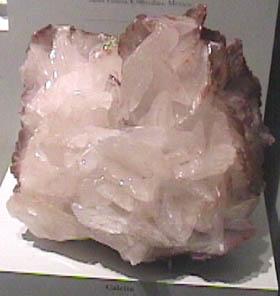 From Tsumeb, Namibia. Sample size about 12cm. |
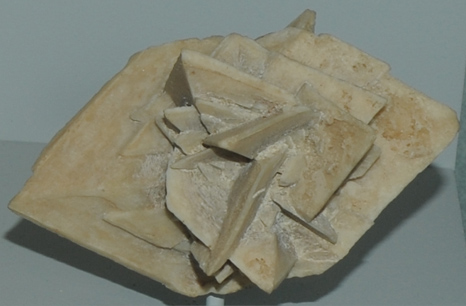 Calcite after glauberite from Camp Verde, Yavapai County, Arizona. The sample is about 8cm across. |

The red calcite at left above is calcite with goethite inclusions from Santa Eulalia, Chihuahua, Mexico. It is about 25cm wide. The center sample has calcite crystals growing from galena from Ozark lead mine, Ellington, Missouri. The complete sample is about 40cm high. The sample at right above is about 20cm wide and is from Namibia.
|
The calcite sample at right is from the Copper Queen mine in Bisbee, Arizona. The light blue color is presumably from a trace of copper, since it looks like the color of azurite. The sample size is about 12x25 cm. 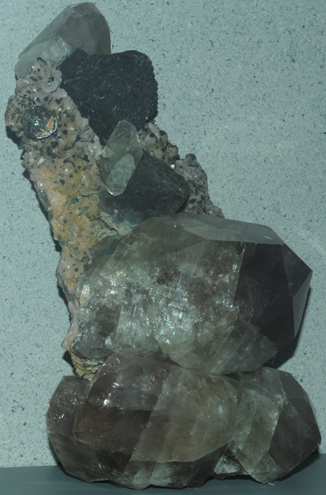 This is calcite with galena and chalcopyrite. The sample is about 20 x 40 cm and is from Joplin, Missouri. |
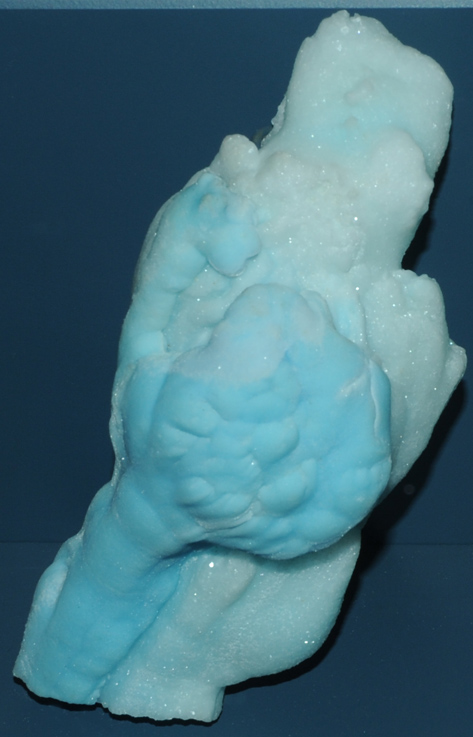 |
 |
This calcite sample is from Minerva mine, Cardin, Oklahoma. It is about 30 cm long. |
|
This large sample of calcite is from the Woodchuck mine in Bisbee, Arizona. The sample size is about 60x50 cm. |
 |
 |
This large calcite crystal is from Joplin, Missouri. It is about 40x20 cm and some 15cm thick. |
|
The collection of calcite crystals at right is from Elmwood mine, Carthage, Tennessee. The overall sample size is about 20x45 cm.  This sample is described as calcite with fluorite. It is about 18x18 cm and is also from Elmwood mine, Carthage, Tennessee. |
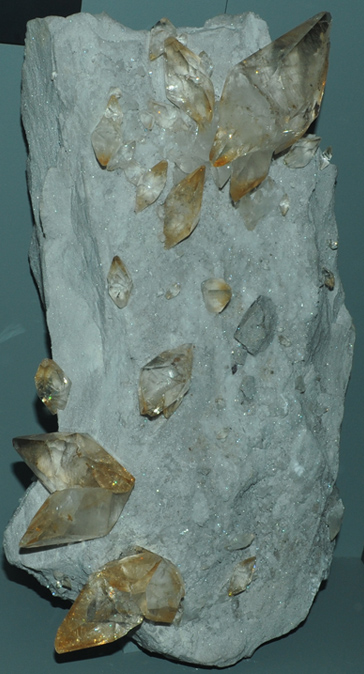 |

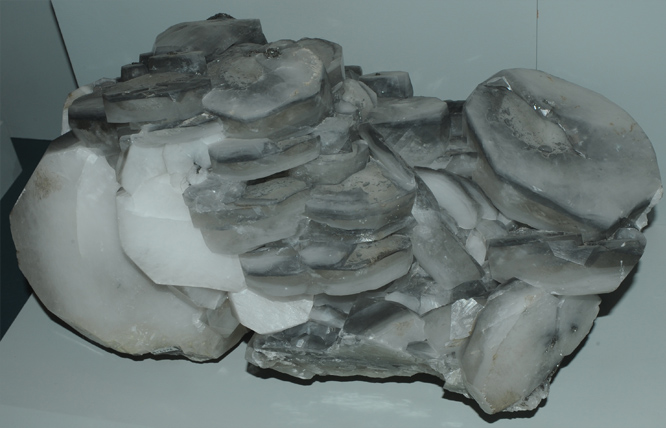 |
This calcite specimen is from San Luis Potosi, Mexico. It is about 25 cm across. |
|
This sample has calcite with quartz and hematite. It is about 12 cm across and is from Zacatecas, Mexico. |
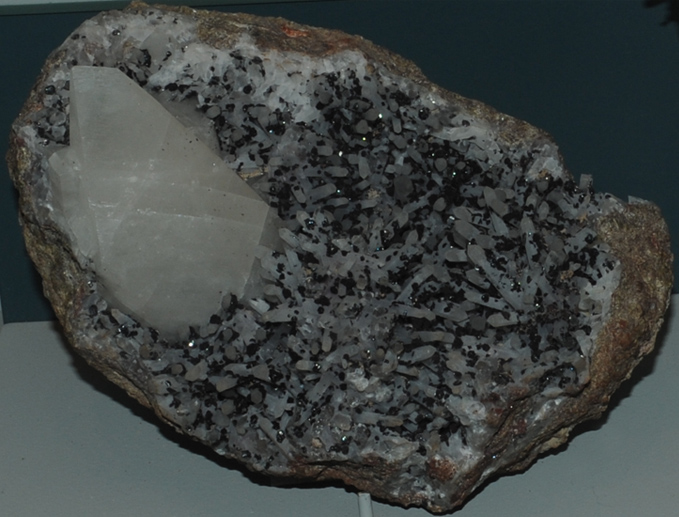 |
| Continuation of the varieties of calcite. |
| Minerals |
| HyperPhysics*****Geophysics | R Nave |